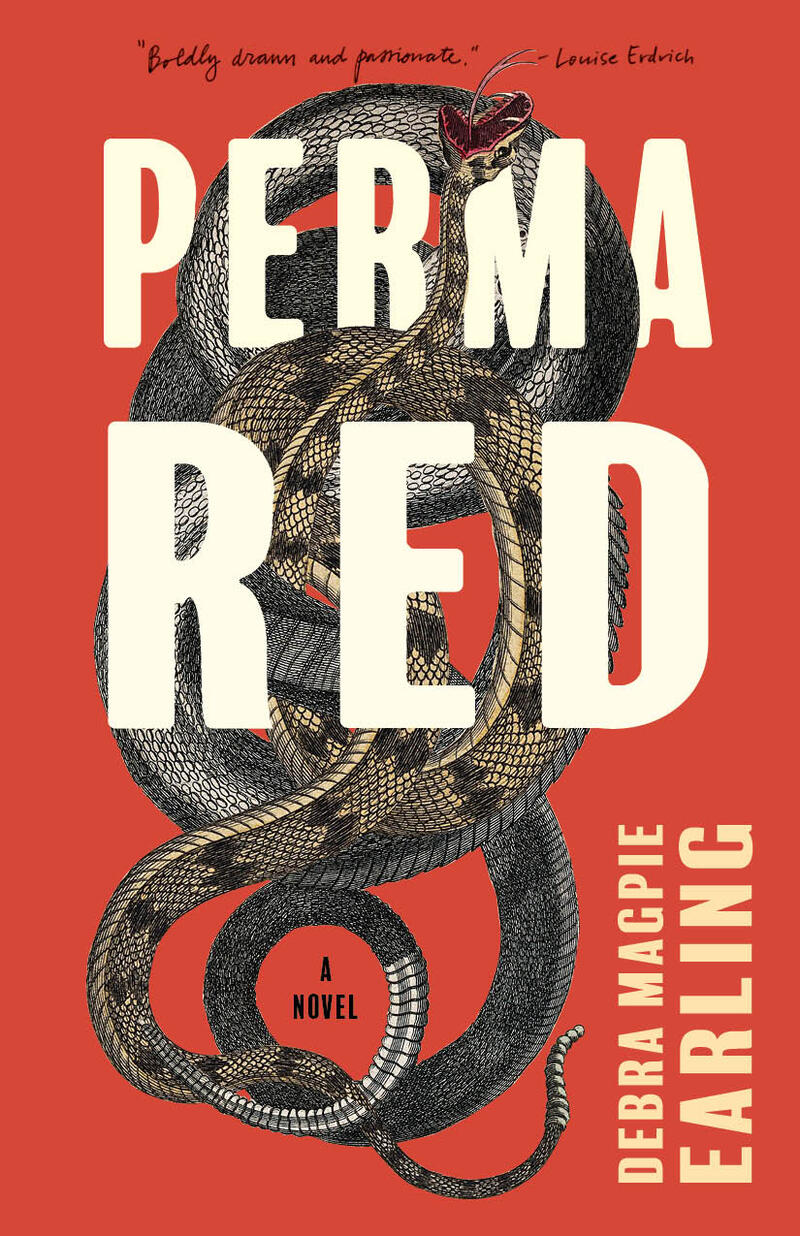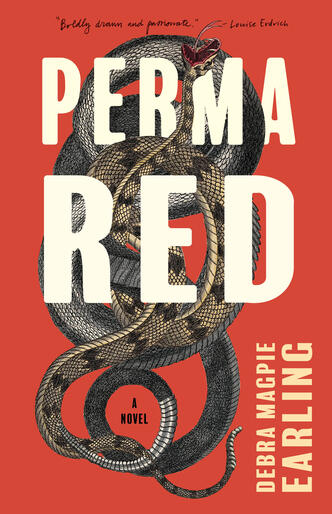Dance of the Natural World: A Cover Image Story

Haŋ (hello) Milkweed community, my name is Kachina Yeager and I am the Editorial Fellow here at Milkweed Editions. Our team is delighted to share with you the cover for Debra Magpie Earling’s forthcoming reissue of Perma Red—out August 2022. I was lucky enough to get to chat with Earling about this remarkable novel, and I’m so excited to share that conversation with our wider community!
Bold, passionate, and urgent, Perma Red follows a young woman determined to forge her own path, Louise White Elk, as she comes of age in the harsh social and physical landscapes of 1940s Montana. As summer comes to a close on the Flathead Indian Reservation, Louise hopes to create an independent life and improved future for herself and her family—but three persistent and entangling men have other plans.
When it was originally released, USA Today called it “spare, tough-minded and big hearted” and Los Angeles Times celebrated Earling’s original voice: “[Earling’s] writing is the most physical I have read in a long time … Verbs and adjectives dance in new configurations. All this and plot, too.” We are delighted to re-introduce Perma Red to eager readers.
Kachina Yeager: Perma Red was originally released in 2003, and when first published, it touched the lives of many people, especially throughout Indian Country. I’m curious to know what you hope to see with reissuing this title twenty years later, and how you hope people engage with the book?
Debra Magpie Earling: Perma Red had a heartfelt reception when it was first released. The experience was both humbling and eye-opening. Many young women recognized themselves in Louise, and traveled great distances to meet me when I read in bookstores across the West. I held the hand of one young Native woman as she told me her own story of survival. All writers hope their story sells and goes on but I never thought this story would have a chance. Perma Red went out of print shortly after it was published, but people continued to read it and continued to believe it was a story that mattered. I am grateful, astonished and humbled by all the people who have shared my work. Without promotion or reprinting, and with only dog-eared copies passed from one reader to the next, the story has lived on for twenty years. Now it has a chance to be read by another generation. It has surpassed my expectations and hopes. Now that Milkweed is reprinting the story I hope it will have another chance.
KY: You learned that Perma Red had been banned in Montana after reading a scholarly article written by a teacher. With so much public interest at the moment in banned books, I’d love to hear your thoughts about the banning of Perma Red in so many classrooms.
DME: Banned books become elevated taboo in the world. Literary currency. Delectable contraband. When the teacher found Perma Red in a school closet it was not just banned she was told, but “incredibly banned” in school districts across Montana. But I wouldn’t say Perma Red is a banned book in the traditional sense. We revere banned books and fight back against censorship by buying and reading them. We find them sexy and powerful and irresistible. We actively move to protect them and bring them out into the open. I fear Perma Red was treated more insidiously, not spoken about, hidden away, and without the teacher’s study would have remained in the dark, snuffed from public light, unseen in that community. She brought it out and had students read it whether they wanted to or not. It was a small brave act that became large. Readers cannot respond to a story kept in darkness. Banning a book is a terrible act but it can also be an act that rallies attention and achieves the opposite of its intent. Closeting a book conceals it completely. Unfortunately hiding the story makes it metaphorically akin to too many stories of Indigenous women across the West.
KY: One thing I particularly love about this cover (other than, of course, that it’s absolutely striking) is the entangling of the snakes. To me, it signifies the relationships Louise finds herself tangled in, which are often more terrifying than romantic. I’d love it if you could speak a bit to how you view Louise’s relationships with the men in this novel and what you hope readers take away from these dynamics.
DME: The image is mesmerizing and beautifully grotesque and suggests the entanglements within the story and its deeper mysterious nature that is grounded in the fantastic. The artist also manages to capture the danger Louise confronts including her battle against boarding school and forced assimilation, men’s overweening and violent desires, and her own longing for freedom and personal agency. The cover image illustrates the dance of the natural world—all the compelling elements of Louise’s struggle. I am astonished by it.


